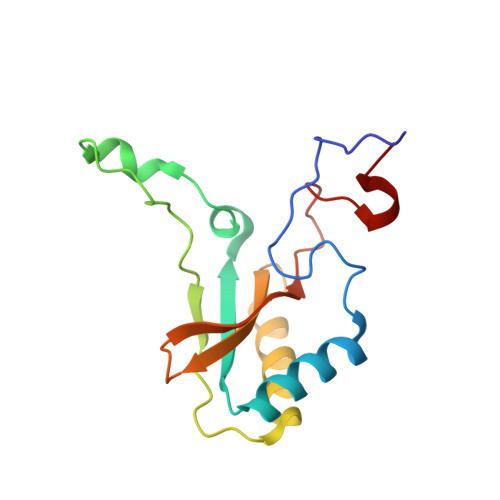Altered Intersubunit Interactions in Crystal Structures of Catalytically Compromised Ribulose-1,5-Bisphosphate Carboxylase/Oxygenase
Karkehabadi, S., Taylor, T.C., Spreitzer, R.J., Andersson, I.(2005) Biochemistry 44: 113
- PubMed: 15628851
- DOI: https://doi.org/10.1021/bi047928e
- Primary Citation of Related Structures:
1UW9, 1UWA - PubMed Abstract:
Substitution of Leu290 by Phe (L290F) in the large subunit of ribulose-1,5-bisphosphate carboxylase/oxygenase from the unicellular green alga Chlamydomonas reinhardtii causes a 13% decrease in CO(2)/O(2) specificity and reduced thermal stability. Genetic selection for restored photosynthesis at the restrictive temperature identified an Ala222 to Thr (A222T) substitution that suppresses the deleterious effects of the original mutant substitution to produce a revertant enzyme with improved thermal stability and kinetic properties virtually indistinguishable from that of the wild-type enzyme. Because the mutated residues are situated approximately 19 A away from the active site, they must affect the relative rates of carboxylation and oxygenation in an indirect way. As a means for elucidating the role of such distant interactions in Rubisco catalysis and stability, we have determined the crystal structures of the L290F mutant and L290F/A222T revertant enzymes to 2.30 and 2.05 A resolution, respectively. Inspection of the structures reveals that the mutant residues interact via van der Waals contacts within the same large subunit (intrasubunit path, 15.2 A Calpha-Calpha) and also via a path involving a neighboring small subunit (intersubunit path, 18.7 A Calpha-Calpha). Structural analysis of the mutant enzymes identified regions (residues 50-72 of the small subunit and residues 161-164 and 259-264 of the large subunit) that show significant and systematically increased atomic temperature factors in the L290F mutant enzyme compared to wild type. These regions coincide with residues on the interaction paths between the L290F mutant and A222T suppressor sites and could explain the temperature-conditional phenotype of the L290F mutant strain. This suggests that alterations in subunit interactions will influence protein dynamics and, thereby, affect catalysis.
Organizational Affiliation:
Department of Molecular Biology, Swedish University of Agricultural Sciences, BMC Box 590, 751 24 Uppsala, Sweden.





















